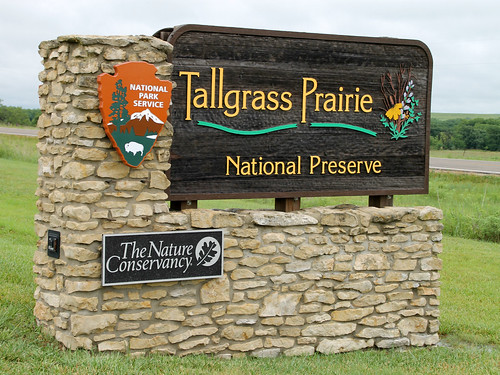
For those who've taken road trips across the U.S., do you take a northern or a southern route? Over the years, we've tended to drive through Iowa and Nebraska on our way to family reunions and gatherings in Colorado and New Mexico. A few times, we've taken the southern route through Illinois, Missouri, Oklahoma, and the panhandle of Texas.
But for some reason, I'd always wanted to drive through Kansas. I'm fascinated by it. It's the middle of the country, in so many ways. I don't know...maybe it stems from watching "The Wizard of Oz" as a kid and wondering what the vast, open prairies of Kansas actually look like (in reality, it was filmed at MGM Studios in California).
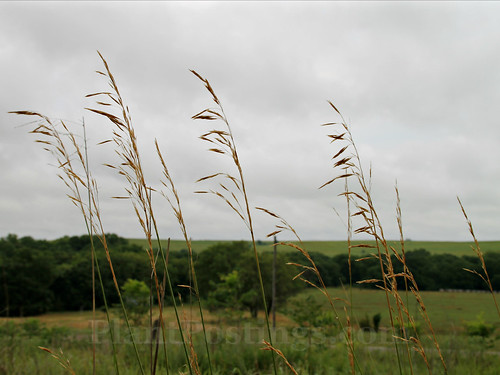
So, I talked the fishman into driving through Kansas on the way to and from our family reunion last summer. After seeing dramatic views at the Grand Canyon, Sedona, Ariz., Monument Valley, Durango, Colo., and the Four Corners area, one might think Kansas would seem ho-hum.
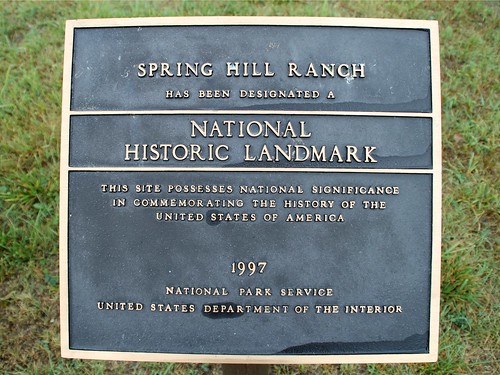
Au contraire--at least for me. While all those destinations were awesome, Kansas was nifty, too. We took a side trip on the way home to stop at the Tallgrass Prairie National Preserve, which protects a nationally significant 11,000-acre remnant of the once vast tallgrass prairie that covered 170 million acres of North America. Today, less than 4% remains, mostly in the Kansas Flint Hills.
Depending on the source, and the specificity of the data, the North American tallgrass prairie stretched from Manitoba south through Eastern Oklahoma and parts of Texas, and from Nebraska east through Indiana and parts of Ohio, Kentucky, and Tennesee. This was prime bison country, and to see a map of where the bison once roamed is mind-boggling. (Sadly, the bison area of the preserve was closed off the day we were there, although I've seen bison in other locations.)
Of course, my first priority was to study the prairie plants at the preserve. Since Southern Wisconsin includes Oak Savanna and Prairie plant communities, most of the plants at the preserve also are native and commonly found here. What I didn't expect was the smaller size of these plants in Kansas--likely due to somewhat lower precipitation levels, difficult soil conditions (rock and clay), and a harsher, more windy habitat than in my area.
It's a testament to their toughness, though, that these plants survive and thrive in the severe, open prairie habitat.
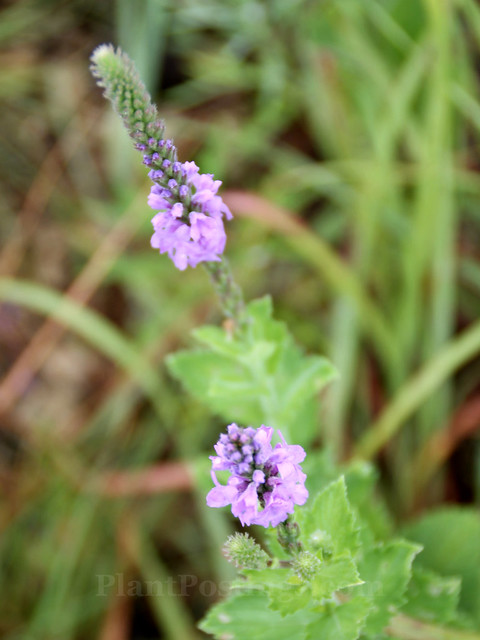 |
| Hoary Vervain (Verbena stricta) |
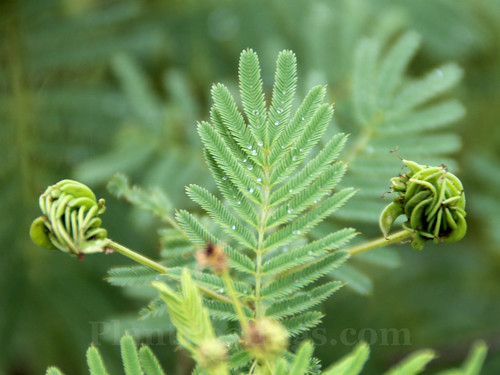 |
| Illinois Bundleflower (Desmanthus illinoensis) |
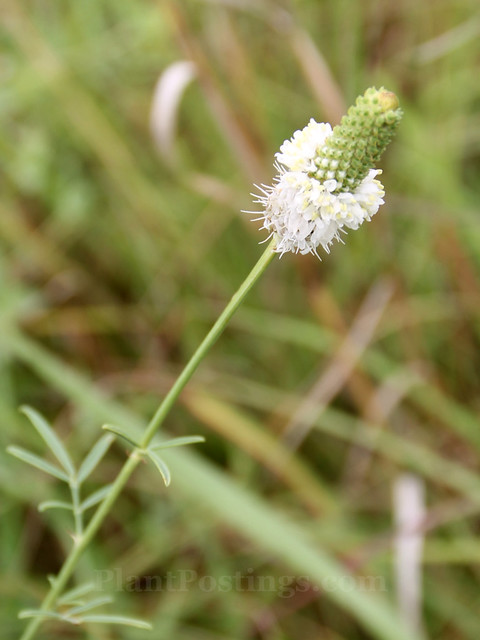 |
| White Prairie Clover (Dalea candida) |
 |
| Wavyleaf Thistle (Cirsium undulatum) |
 |
| Common Prickly Pear Cactus (Opuntia humifusa) |
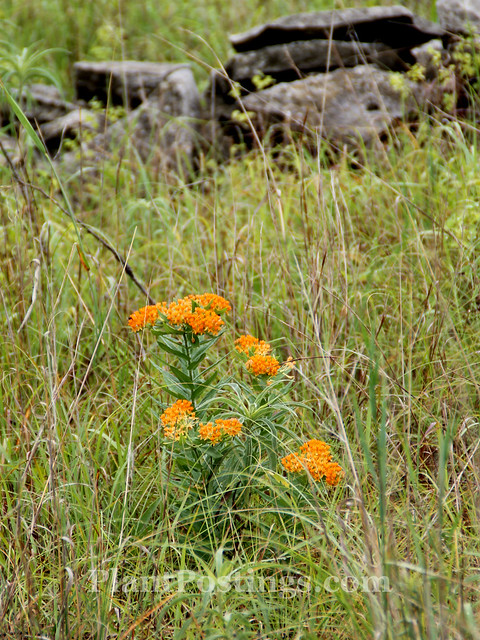 |
| Butterfly Weed (Asclepias tuberosa) |
Leadplant (Amorpha canescens) and Butterfly Weed
|
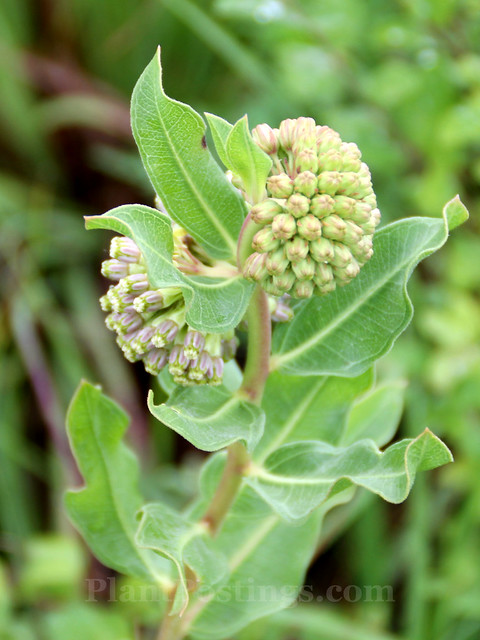 |
| Green Milkweed (Asclepias viridis) |
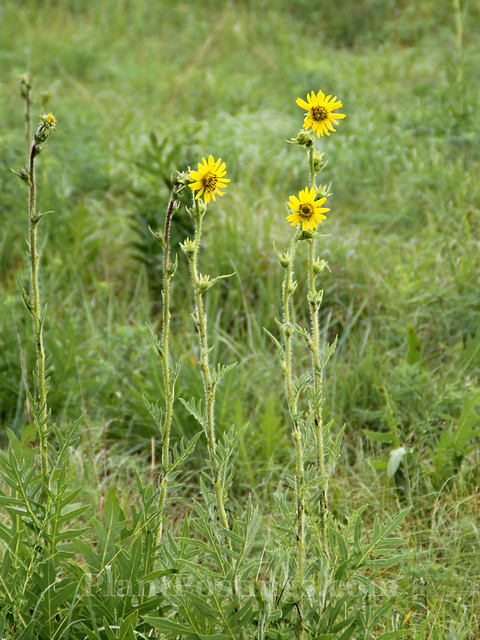 |
| Compass Plant (Silphium laciniatum) |
The plants were awesome, but the views were mesmerizing--prairie as far as the eye could see. The day was misty, which created an air of mystery to the landscape. If you click on the next photos, you'll get a better idea of the expansive landscape at the Tallgrass Prairie National Preserve--definitely worth a side trip next time you're traveling through Kansas.

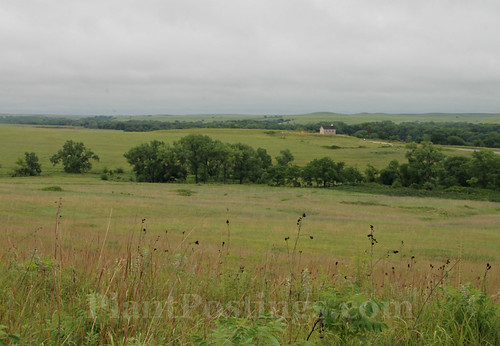
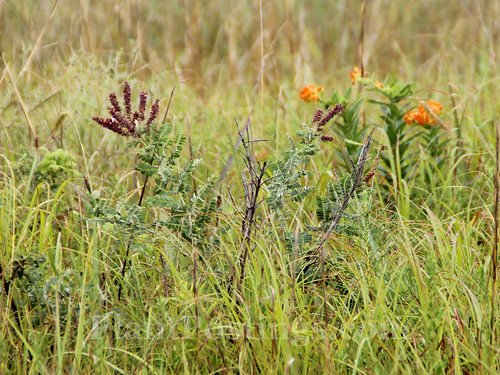
The plants are lovely and great photos, looks like you had a lovely day..
ReplyDeleteAmanda xx
Thank you, Amanda. Yes, it was a sweet experience. It would be great to see it on a sunny day in spring, too.
DeleteI have been through KS several times. I love those prairies.
ReplyDeleteIn some ways, it's much like Nebraska, but a little drier. But in other ways, it has a personality all its own. I expected more tall wheat fields, but apparently they use a shorter variety of wheat today than they did in the past. Interestingly, probably because of climate change, Wisconsin is growing more wheat now. I don't remember it here much when I was growing up, although apparently wheat was the earliest and most important cash crop for European settlers in Wisconsin--before the dairy industry took over the top spot.
DeleteI had to smile, because people tell me North Dakota is boring to drive thru, yet I found it fascinating. I love prairies as well. We visited National Grasslands Museum last year located in Wall, South Dakota.
ReplyDeleteYes, I hear you. I LOVE South Dakota! Seriously. It so much more diverse than people realize. I've never stopped at the National Grasslands Museum, but I need to do that! We stopped at Wall Drug and the Corn Palace several times. I haven't been through North Dakota much.
DeleteInteresting place! Thank you for sharing
ReplyDeleteYou are welcome. Yes, it's fascinating in a mysterious, unique, open kind of way. I would like to see it on a sunny day, too.
DeleteThe prairie has a beauty all it's own. Having grown up in a valley between very tall mountains, my view of the sky was quite small compared to where I now live, still with mountains in the distance. Prairies open the sky even further.
ReplyDeleteTrue. Your description of a small view of the sky reminds me of my backyard in spring and summer. It can be comforting, but sometimes I have to get out and visit the nearby prairies and more open Oak savannas. It's nice to have such a variety of options nearby. Your area has many options and experiences nearby, too.
DeleteI also live in a valley - and it feels so different, up on the mountain, or in the next much wider valley of the Cape Flats and the City.
DeleteI70 million acres? Coming from a tiny island, the vast expanses of countryside you have in the States make me dizzy. Like staring up at the stars.
ReplyDeleteI love to see the wild flowers in other countries, thank you for sharing these.
Yes. Now that was BEFORE the agricultural transformation of the U.S. interior, of course. Most of that land was converted to farmland to "feed the world." We still do, however, have vast open spaces in the middle of the country, and even on the coasts. It's just that so much more of it is cultivated cropland. Yes, staring up at the stars is a fabulous experience! Wildflowers, in any location, are awesome. You are welcome!
DeleteOh how beautiful! Several years ago, we had a blogging friend visit from the UK. After she and her husband spent a few days with us in Illinois, she traveled on to Kansas to meet another friend who took her to see this prairie preserve. I know it was her favorite part of the whole trip! This would make driving through miles and miles of corn and wheat fields worth it:)
ReplyDeleteOh, it sounds like your friends had an authentic "American experience" while they were here! The miles and miles of corn, wheat, and soybean fields can get a little old, but there's something pleasant in that, too. I think you'd enjoy seeing the preserve, Rose.
DeleteI would love to see this prairie preserve. I also want to see the prairie restoration at Midewin near Joliet and Nachusa near Peoria. Maybe a field trip for the midwest bloggers?
ReplyDeleteYes, I think you would enjoy it, Jason. I like your idea of a field trip to the prairie restorations!
DeleteI've never been to Kansas - yet another destination on my list. The prairie reserve looks wonderful - I too am surprised that the prairie plants would be smaller than in Wisconsin as I tend to equate milder climates with larger plants.
ReplyDeleteInteresting that you mention that, Margaret. Toronto seemed so much like home to me--similar climate, plants, diverse landscapes, lakes, hills, forests, etc. I think our soils and precipitation are more favorable for these plants, even if we have harsher winters.
DeleteThanks for this peek into a different Kansas than we're used to hearing about (as in "what's the matter with").
ReplyDeleteThe vastness and diversity of this country is part of what makes it special. You are welcome. Kansas has its own unique personality. :)
DeleteLovely photos and post, Beth -- thanks for sharing.
ReplyDeleteThank you, Lisa. There's so much to see in every state!
DeleteGreat photos . . .
ReplyDeleteGreat choice for your drive . . .
Thanks, Lynne. Yes, we enjoyed it very much!
DeleteGlad to see that there's still some prairie left--great photos, beautiful landscape. Thanks for the tour; I've been to Kansas, but oh so long ago...
ReplyDeleteTina: A few patches of prairie here and there. Sad to think it was so vast at one time. I'm trying to imagine what it was like to travel across this great country before automobiles. Scary, and yet exhilarating, I'm thinking.
DeleteGreat to see the tall-grass species. I used to live in the mixed-grass zone, so some are familiar. But others I've only heard about.
ReplyDeleteOne of the things I've most enjoyed about traveling across country at a slower pace (not in an airplane), is seeing the gradual transitions from starting point to destination. What a vast, fascinating country we live in! When we drove to Colorado one time, we purposely traveled through Wyoming and camped in Medicine Bow National Forest. Your state (especially the high plains) is diverse and fascinating, too, Hollis!
DeleteLooks awesome. I wonder the best time of year to see the meadow in bloom might be?
ReplyDeleteExciting and fun to see that I'm trying to grow several of the plants featured. I grow the purple prairie clover now (an awesome plant, btw) but hope to grow the white one too starting next year.
This is my first year growing Illinois bundleflower and though I was slightly disappointed at first, it's growing on me now. No pun really intended ;)
Also interesting to see how plants are at different stages. So my Illinois bundleflower just started flowering here maybe a week ago, whereas it seems like it's already going to seed in Kansas. But on the other hand, Asclepias viridis flowered for me in spring and hasn't had any rebloom, whereas it seems to be blooming there!
Curioser and curioser, as Alice says in Wonderland...
Hey Aaron: One of the links I included mentions the prairie's "lushest" bloom time is April and May. But then you'd miss the blooms shown in this post and many of the tall grasses. We were there in early July last year. So, I guess that would be more in line with your blooming schedule (except for the Bundleflower?). I know Asclepias species bloom on staggered schedules, depending on the age of the plant, whether it was cut, clipped, browsed, or eaten earlier in the season, etc. But, yes, plant behavior is fascinating. Regarding Purple Prairie Clover: Yes, I love it, too! At a pollinator presentation I went to last year, the presenter said it's one of the best native plants to benefit both native bees and honey bees. I don't have enough sun for it here, but I have used it in pollinator gardens elsewhere. It's a beautiful flower, too.
DeleteWhat a wonderful post. There are so many beautiful plants to see and learn about in the world. No prairie in Massachussetts, but you have made me consider the different routes one might take when travelling to include different gardens and 'monuments.'
ReplyDeleteThank you, Pat! Yes, being a plant nerd is a joy, since there's so much to learn. I love a good road trip--east or west or south (or maybe north in the summer). So much to see and learn, and it's always fun to take a new route!
DeleteI love the views, the feeling of a trip and especially all the details about wildflora, that is something I ma very much into these weeks. Thanks!
ReplyDeleteHi Lula: I'm glad you enjoyed the road trip! ;-) So much to learn--even about plants we're already familiar with.
DeleteSo beautiful! When I was a student at KSU we used to visit the Konza Prairie Biological Station. I was so impressed with the prairie having not grown up with anything quite like that. I had no clue a National Preserve was so close. Definitely a place to add onto the list of road trip destinations.
ReplyDelete